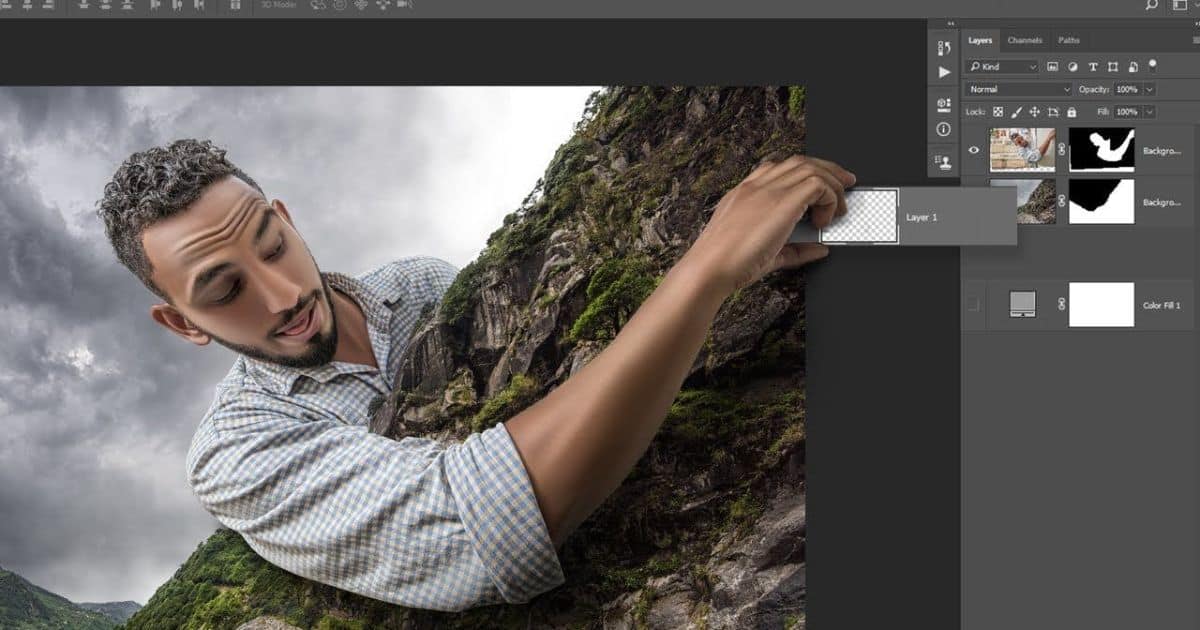Adding bleed to your Photoshop designs is an essential step in ensuring a professional and polished final product. Bleed is the area beyond the edge of your design that is intentionally extended to prevent any white borders or gaps when your design is trimmed. This is particularly crucial for printed materials such as brochures, business cards, and posters.
In this guide, we will explore the importance of bleed in Photoshop and provide you with a step-by-step approach to adding bleed to your designs. We will also discuss the difference between bleed and maron how to add bleed in other design software like InDesign and Illustrator. Lastly, we will discuss the option of professional printing services and whether they can add bleed to your documents. So, let’s dive in and discover how to add bleed in Photoshop like a pro!
Key Takeaways
- Bleed is important in graphic design to prevent white edges or gaps when a design is printed and trimmed.
- Adding bleed to Photoshop designs involves extending the background beyond the trim area using the Canvas Size option.
- Utilizing bleed marks in Photoshop helps indicate the area of the design that extends beyond the trim size.
- Bleed is different from margins, as bleed extends the design beyond the edges to prevent white borders or gaps, while margins provide a buffer within the layout for readability.
Understanding Bleed in Photoshop
Bleed in Photoshop refers to the extension of an image or design beyond the intended final size, ensuring that there are no white edges when the image is printed and trimmed. It is a crucial concept in graphic design, as it helps to prevent any unwanted gaps or inconsistencies in the printed material Contact Sheet in Photoshop.
When designing a project that requires bleed, it is essential to extend the background or any other elements that are intended to reach the edge of the page. This ensures that even if there are slight variations during the printing and trimming process, the design will still appear seamless and professional. Understanding bleed and applying it correctly in Photoshop is essential for producing high-quality printed materials.
Adding Bleed to Your Photoshop Designs

To ensure that your designs have the necessary bleed in Photoshop, it is important to take the following steps:
- Set up your document correctly: Before you start designing, make sure to set up your document with the desired dimensions and resolution. Include an additional margin around your design to accommodate the bleed.
- Extend your background: To add bleed to your design, you need to extend the background beyond the trim area. Use the Canvas Size option in Photoshop to expand the canvas and include the bleed area.
- Adjust your design elements: After extending the background, make sure that all the important elements of your design, such as text and images, are within the new canvas boundaries. This will ensure that no crucial information is cut off during the printing process.
Utilizing Bleed Marks in Photoshop
To ensure a professional printing outcome, incorporating bleed marks in your Photoshop design is essential. Bleed marks are used to indicate the area of the design that extends beyond the final trim size. They ensure that there are no white edges or gaps when the design is printed and trimmed.
In Photoshop, you can easily utilize bleed marks by adjusting the canvas size to include the bleed area and then adding guides to indicate the trim size. By doing so, you can accurately position your design elements and ensure that important information is not cut off during the printing process. Bleed marks serve as a reference for the printer, helping them understand the intended final size and ensuring a seamless and professional print outcome.
Step-by-Step Guide: Adding Bleed in Photoshop
To accurately incorporate bleed in your Photoshop design, follow these step-by-step instructions:
- Open your design in Photoshop and go to the “Image” menu. Select “Canvas Size” to adjust the canvas size.
- In the Canvas Size dialogue box, enter the desired dimensions for your final printed piece, including the bleed area. Make sure to add an extra 1/8 inch to each side for the bleed.
- Next, select the Relative option and choose a reference point in the canvas. This will determine which side of the canvas will expand or contract.
- Click OK to apply the changes. Your canvas will now include the bleed area, allowing you to extend your design beyond the trim area.
- Remember to save your file in the appropriate format, such as PDF or TIFF, to preserve the bleed area when sending it to a printer.
Bleed Vs. Margins: What’s the Difference
The distinction between bleed and margins is important to understand in the context of Photoshop design. While both bleed and margins play a role in the final appearance of a printed design, they serve different purposes. Bleed refers to the area beyond the edges of the design that is intentionally extended to prevent any white borders or unwanted gaps when the design is trimmed.
It ensures that the design extends to the edge of the printed piece. On the other hand, margins are the defined spaces within the design layout that provide a buffer between the content and the edges of the page. They are used to maintain readability and prevent important elements from being cut off. Understanding the difference between bleed and margins is crucial for creating professional-looking designs in Photoshop.
Adding Bleed in InDesign, Illustrator, and Photoshop

To add bleed in InDesign, Illustrator, and Photoshop, follow these steps:
- In InDesign: Go to “File” > “Document Setup” and enter the desired bleed value in the “Bleed” field. Click “OK” to apply the changes.
- In Illustrator: Open your document and select the artboard tool. In the control panel, enter the bleed value in the “Bleed” field and click “OK”.
- In Photoshop: Open your document and go to “Image” > “Canvas Size”. Enter the desired bleed value in the “Width” and “Height” fields, making sure to select “Relative” and anchor the image to the centre. Click “OK” to add the bleed.
Once you have added the bleed to your design, it is important to export it correctly to ensure the bleed is included in the final print. In the next section, we will discuss what to look for when exporting your design as a PDF.
Exporting Your Design: What to Look for in a PDF
When exporting your design as a PDF, it is essential to carefully review the settings and options to ensure the inclusion of the bleed. Bleed is the extra space added to the edges of a design to prevent any white borders or blank spaces from appearing when the design is trimmed. To ensure that the bleed is included in the PDF, you should check for a few key things. Firstly, verify that the bleed and crop marks options are selected in the export settings.
Secondly, confirm that the bleed area extends beyond the design’s edges by the specified amount. Double-check that the page size is correctly set to include the bleed. By taking these steps, you can ensure that your exported PDF includes the necessary bleed for a professional and polished final product.
Professional Printing Services: Can They Add Bleed to Your Document?
Professional printing services can add bleed to your document. This is an important feature that ensures that your design extends beyond the trim area, preventing any white edges when the final product is trimmed. Here are three reasons why you should consider using professional printing services to add bleed to your document:
- Accuracy: Professional printing services have the expertise and specialized software to accurately add the required bleed to your document, ensuring that it meets the printing industry standards.
- Quality control: These services have stringent quality control measures in place to ensure that your document is printed with precision and attention to detail, including the proper bleed.
- Time-saving: By outsourcing the task of adding bleed to your document to a professional printing service, you can save valuable time and focus on other important aspects of your project.
Using professional printing services to add bleed to your document guarantees a polished and professional final product.
FAQs
Conclusion
In conclusion, understanding how to add bleed in Photoshop is essential for creating professional designs. By incorporating bleed marks and adjusting margins, you can ensure that your design extends beyond the page edge, allowing for clean and seamless printing.
Remember to export your design as a PDF with the appropriate settings and consider utilizing professional printing services for added convenience and quality. Mastering the art of adding bleed in Photoshop will elevate your designs to new levels of excellence.
